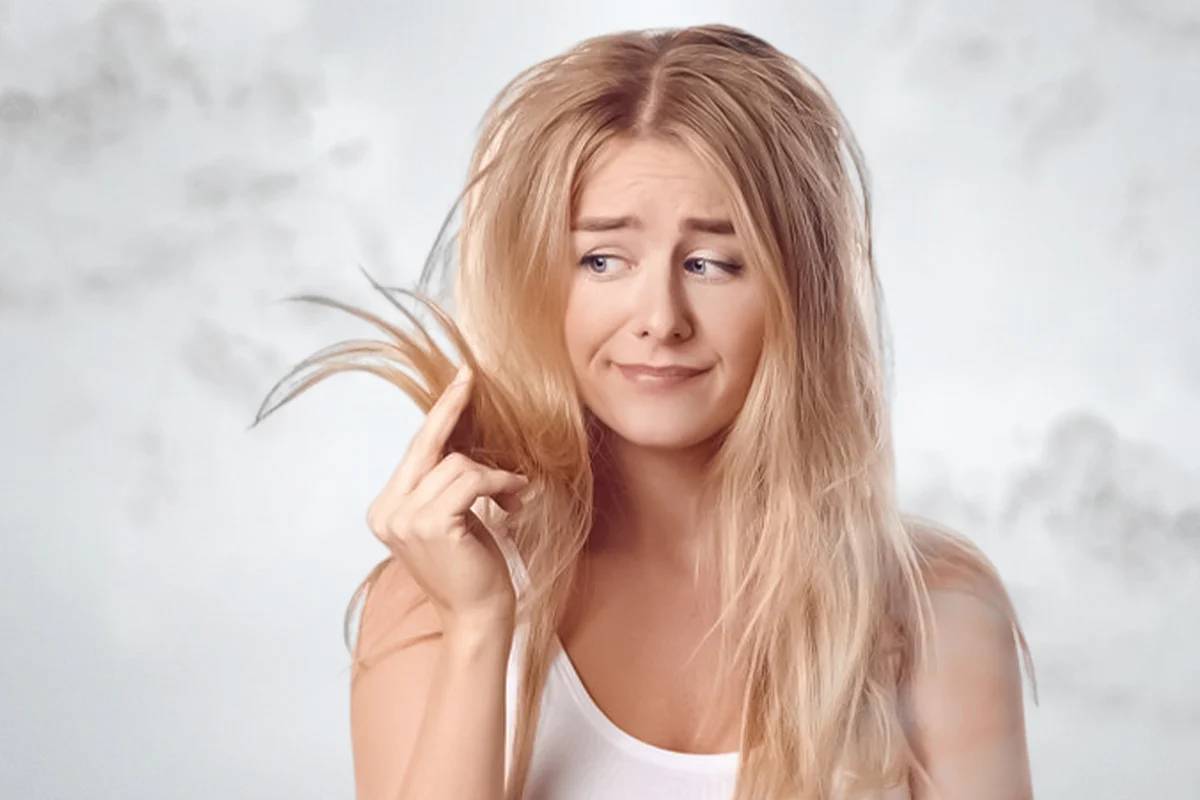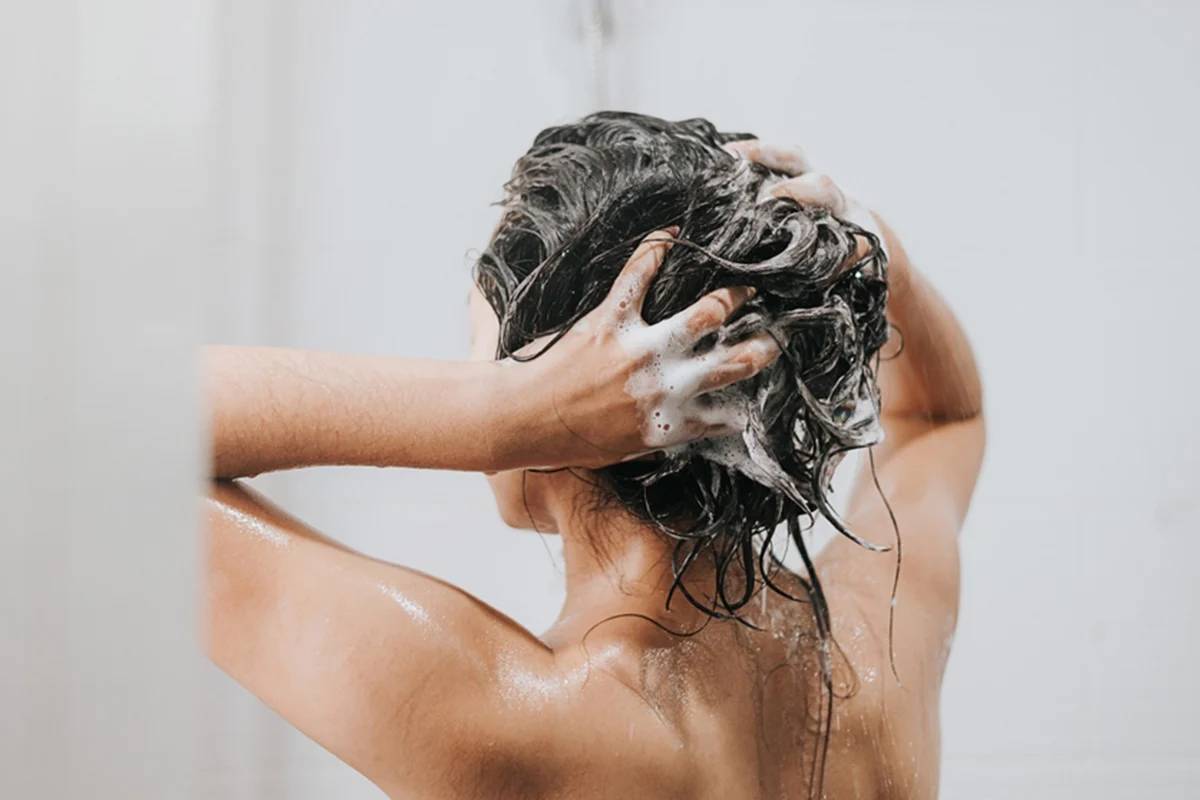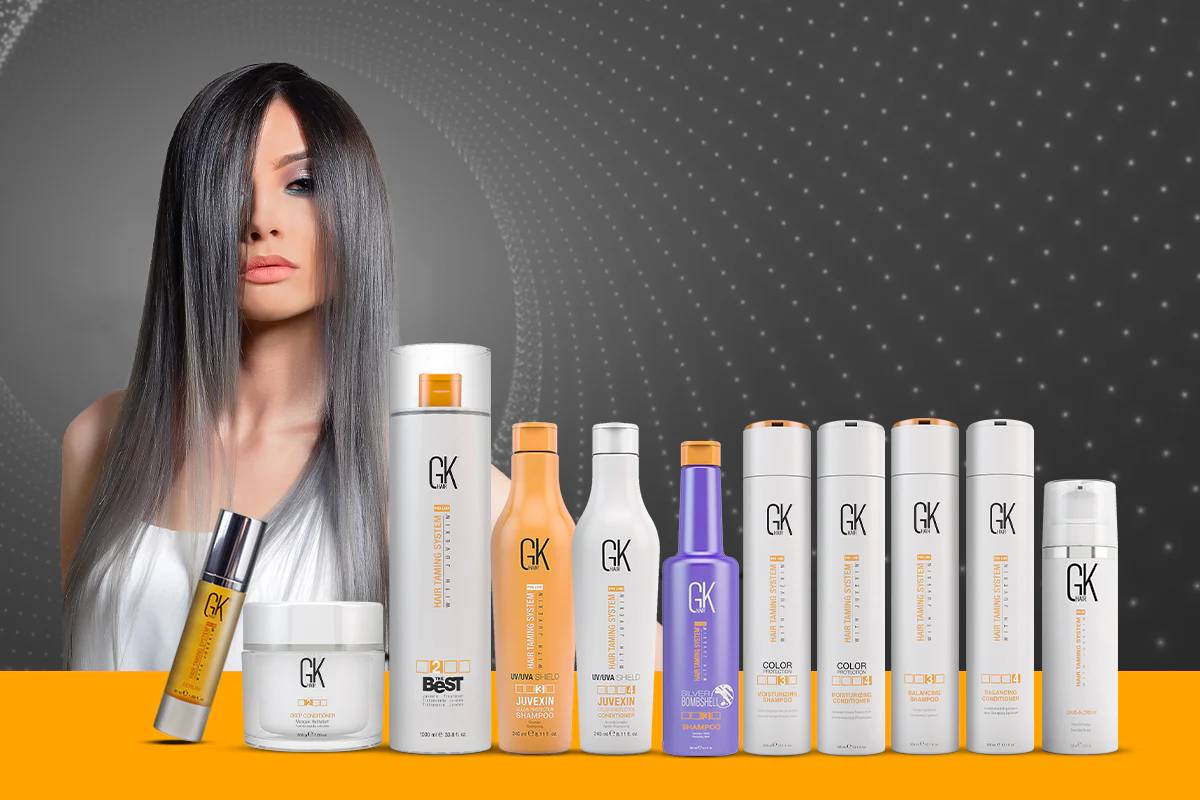Are you struggling with frizz, breakage, or dullness in your hair? You're not alone. Damaged hair can manifest in various ways, impacting both its appearance and texture. Understanding the telltale signs of damaged hair is crucial for implementing effective hair care routines. Join us as we explore the visual cues of damaged hair and equip you with the knowledge to revitalize your locks.
What Does Damaged Hair Look Like?
Split ends: Split ends occur when the protective outer layer of the hair cuticle becomes damaged, resulting in the hair shaft splitting into two or more strands.
Dryness: Damaged hair often appears dry and rough, lacking the natural shine and softness of healthy hair.
Dullness: When light reflects off your hair, observe whether it appears dull and lackluster rather than vibrant and glossy, indicating damage to the hair cuticle.
Breakage: You may notice an increase in hair fall or shedding, as damaged hair is more likely to break and fall out during routine activities such as brushing or washing.
Tangles and knots: Notice if your hair feels rough and tangled, requiring extra effort to detangle with a comb or brush, which can further exacerbate breakage and damage.
Lack of elasticity: Healthy hair can stretch and return to its original shape, but damaged hair may not have this elasticity.
Color fading: Over-processed hair can fade quickly, losing its vibrancy and becoming brassy or dull.
These are the common signs of damaged hair. To combat issues like split ends and dryness, consider incorporating products like GK Hair Treatment and Moisturizing Shampoo & Conditioner into your hair care routine.

How To Know If Your Hair Is Damaged?
One of the most common signs of damaged hair is the presence of split ends. Check the ends of your hair strands for fraying or splitting, indicating damage to the hair cuticle. Damaged hair often feels dry and rough to the touch, lacking the softness and moisture of healthy hair. Run your fingers through your hair and notice if it feels parched or brittle.
Notice if your hair feels stiff and lacks flexibility, as these are signs of brittleness and damage to the hair shaft. Pay attention to how your hair reflects light, as damaged hair may have a matte or flat appearance compared to healthy, glossy hair. Healthy hair should have a certain level of elasticity, allowing it to stretch and return to its original shape without breaking. Test the elasticity of your hair by gently pulling on a strand and observing how it responds.
Consider any recent changes in your hair care routine or lifestyle that may be contributing to increased shedding, such as heat styling, chemical treatments, or stress, as these can exacerbate hair damage.Look for signs of frizz, flyaways, or unruly strands that are difficult to manage, as these are common indicators of damage to the hair cuticle and underlying structure.
Is Keratin Treatment Good for Hair?
Indeed, keratin treatment can work wonders for your hair, offering a plethora of benefits beyond just straightening. By replenishing the lost keratin protein in your hair, the treatment helps to repair damage, reduce frizz, and improve overall manageability. With regular use, keratin treatment can leave your hair feeling softer, smoother, and healthier than ever before. For a premium keratin hair treatment in Abu Dhabi that prioritizes the health and integrity of your hair, look no further than GK Hair Keratin treatment, formulated with high-quality ingredients to deliver salon-worthy results.

Damaged Hair Men
Men can experience similar signs of damaged hair as women, including split ends, dryness, and breakage. Check for these indicators by examining the ends of your hair strands and assessing their texture and appearance.
Consider whether your hair is regularly exposed to environmental stressors such as sun exposure, pollution, or harsh weather conditions, as these can contribute to hair damage over time.Trim your hair regularly to remove split ends and prevent further damage.For men experiencing hair damage, GK Hair Treatment and Moisturizing Shampoo & Conditioner offer effective solutions to repair and strengthen hair.
Heat Damaged Hair
Heat damaged hair often appears dry, brittle, and lifeless. Look for signs of frizz, split ends, and breakage, especially towards the ends of your hair strands, which are most susceptible to heat damage. Use heat protectant products before using styling tools to shield your hair from heat damage. Look for products specifically formulated to protect against high temperatures and minimize damage to the hair cuticle.
Practice patience and consistency when repairing heat damaged hair, as it may take time to see noticeable improvements. Be gentle with your hair and avoid further stress or tension that could exacerbate damage. Focus on maintaining a healthy hair care routine and avoiding excessive heat exposure to promote hair recovery. To repair heat-damaged hair, consider using GK Hair Treatment to restore moisture and strengthen hair strands.
Perm Damaged Hair
Perm damaged hair may appear dry, frizzy, and brittle, with a lack of bounce and elasticity. Check for signs of uneven texture and roughness, especially in areas that were chemically treated during the perming process. Consult with a professional hairstylist before getting a perm to assess the health and condition of your hair and determine if it is suitable for chemical treatment. Discuss your desired perm style and any concerns you have about potential damage
Practice patience and consistency when repairing perm damaged hair, as it may take time to fully restore your hair's natural texture and resilience. Be gentle with your hair and avoid further chemical treatments or harsh styling techniques that could exacerbate damage. Focus on nurturing your hair back to health with a dedicated hair care routine and professional guidance.
Damaged Relaxed Hair
Damaged relaxed hair often appears dry, weak, and prone to breakage. Check for signs of brittleness and roughness, especially in areas that have been chemically treated to relax the hair texture.
Use gentle shampoo and conditioner formulated for chemically treated hair to maintain the health and integrity of your relaxed hair. Avoid using harsh styling products or excessive heat styling that can further weaken the hair shaft and cause damage.
Damaged Hair Strand
Damaged hair strands may exhibit various visible and tactile signs, such as dryness, brittleness, and dullness. Look for rough textures and uneven lengths along the hair shaft, which can indicate damage to the hair cuticle.
Damaged hair strands can result from various factors, including heat styling, chemical treatments, environmental stressors, and mechanical damage from brushing or styling. Evaluate your hair care routine and lifestyle habits to identify potential sources of damage to your hair strands.
Sun Damaged Hair
Excessive sun exposure can leave your hair dry, brittle, and faded. Protect it by wearing hats and using UV-protective hair products. Repair sun damage with moisturizing treatments enriched with aloe vera and coconut oil. Trim regularly to remove dry ends and promote healthy growth. Avoid heat styling and harsh chemicals, opting for gentle care to restore your hair's health and vitality.
Chemically Damaged Hair
Chemical damage to your hair can lead to dryness, brittleness, and loss of elasticity, often seen as breakage and split ends. Prevent damage by consulting professionals before treatments and using gentle, sulfate-free products. Repair with intensive treatments containing keratin and amino acids, while regular trims can remove split ends and promote growth. Patience and consistency are key in restoring your hair's health.

Damaged Hair Follicles
Damaged hair follicles can lead to hair thinning, balding, and breakage. Look for areas of sparse or receding hairline, as well as increased shedding or difficulty growing new hair. Reflect on any underlying health conditions or medications that may be affecting your hair follicles, such as thyroid disorders or certain medications known to cause hair loss. Consult with a healthcare professional if you suspect underlying health issues contributing to damaged hair follicles.
Frequently Asked Questions about Damaged Hair
DOES TONER DAMAGE HAIR?
Toner itself doesn't typically damage hair, but improper use during the toning process can potentially cause damage. Bleaching hair before toning and leaving the toner on for too long can lead to over-processing and damage. It's best to have a professional apply toner to minimize any potential damage and use a hair care routine focused on repairing and protecting the hair.
DOES PURPLE SHAMPOO DAMAGE HAIR?
Purple shampoo is formulated to counteract brassiness in blonde, gray, and white hair, but overuse or prolonged exposure can lead to dryness and damage. It's recommended to use purple shampoo once or twice a week and follow with a moisturizing conditioner to prevent dryness and maintain hair health.
DO HIGHLIGHTS DAMAGE HAIR?
While highlights can add dimension to hair, they may cause damage if not executed correctly or if the hair is compromised. The bleaching process involved can strip hair of its natural oils, leading to dryness, breakage, and split ends. To minimize damage, it's essential to seek professional expertise and adhere to a diligent maintenance routine.
IS SEMI PERMANENT HAIR DYE DAMAGING?
Semi-permanent hair dye is typically less damaging than permanent dye due to its gentler formulation. However, repeated or excessive use can still result in damage, particularly if the hair is already fragile. To mitigate potential harm, it's advisable to use semi-permanent dye sparingly and adhere to a regimen that promotes hair health.
DOES DEVELOPER DAMAGE HAIR?
Developer used during hair coloring can potentially damage hair if not used correctly. It's essential to pay attention to the developer's strength and use the appropriate level for your hair type and color goals. Additionally, incorporating deep conditioning treatments can help restore and strengthen hair post-treatment.
DOES BLEACHING YOUR HAIR DAMAGE IT FOREVER?
Bleaching hair can cause damage by stripping away its natural pigment and weakening the hair structure. While damage from bleaching may not be permanent, repeated or improper bleaching can lead to long-term harm such as increased porosity, breakage, and loss of elasticity.
DOES SEA SALT SPRAY DAMAGE HAIR?
Sea salt spray can potentially damage hair if used excessively or if the hair is already weakened. The salt content can strip away natural oils, leading to dryness and brittleness. To minimize damage, it's advisable to use sea salt spray sparingly and follow with hydrating hair care products.
DOES HAIRSPRAY DAMAGE HAIR?
Hairspray itself isn't inherently damaging, but certain types may contain alcohol or other drying agents that can dehydrate hair over time. Opt for alcohol-free hairsprays and avoid excessive use to prevent dryness and potential damage.
DOES STRAIGHTENING YOUR HAIR DAMAGE IT?
Straightening hair with heat styling tools can indeed cause damage, particularly if used excessively or at high temperatures. The heat can dehydrate hair and weaken its structure, leading to dryness, breakage, and split ends. Employing protective measures such as heat protectant products and reducing heat exposure can help minimize damage.
DOES SUN-IN DAMAGE HAIR?
Sun-In and similar products contain hydrogen peroxide, which can lighten hair but may also cause damage if used improperly. Overexposure to sunlight and excessive use of Sun-In can lead to dryness, brittleness, and potential breakage. To minimize damage, follow the product instructions carefully and prioritize hair health.
HOW TO FIX HEAT DAMAGED HAIR?
Repairing heat-damaged hair involves replenishing moisture and strengthening the hair structure. Use hydrating hair masks and deep conditioning treatments to restore moisture, and incorporate protein-rich products to strengthen the hair. Trim regularly to remove split ends and prevent further damage.
HOW TO FIX DAMAGED BLEACHED HAIR?
Treat damaged bleached hair with intensive hydration and protein treatments to repair the hair's structure and improve resilience. Trim regularly to remove split ends and promote healthy growth. Additionally, avoid further bleaching and minimize heat styling to prevent additional damage.
HOW TO FIX DAMAGED CURLY HAIR?
Repairing damaged curly hair requires moisture restoration and curl definition. Use hydrating hair masks, leave-in conditioners, and curl-defining products to nourish and shape the hair. Detangle gently to prevent breakage, and minimize heat styling to maintain hair health.
HOW TO FIX DRY DAMAGED HAIR?
Repairing dry, damaged hair involves replenishing moisture and restoring elasticity. Use hydrating hair masks and leave-in conditioners to moisturize and nourish the hair. Trim regularly to remove split ends and promote healthy growth.
HOW TO REPAIR CHEMICALLY DAMAGED HAIR?
Treat chemically damaged hair with intensive hydration and protein treatments to repair the hair's structure and improve resilience. Trim regularly to remove split ends and promote healthy growth. Additionally, avoid further chemical treatments and minimize heat styling to prevent additional damage.
Conclusion
Understanding the signs of damaged hair is essential for effective hair care. By recognizing issues like split ends, dryness, and breakage, you can take proactive steps to restore your hair's health. With the right products and routine, such as GK Hair Treatment and Moisturizing Shampoo & Conditioner, you can address various types of damage and promote hair resilience.
Remember, damaged hair can affect anyone, regardless of gender or hair type. Whether you have curly or straight hair, prioritizing hydration and protection is key to maintaining vibrant, healthy locks. By taking steps to assess your hair's condition and tailor your care routine accordingly, you can nurture your hair back to its natural beauty.









